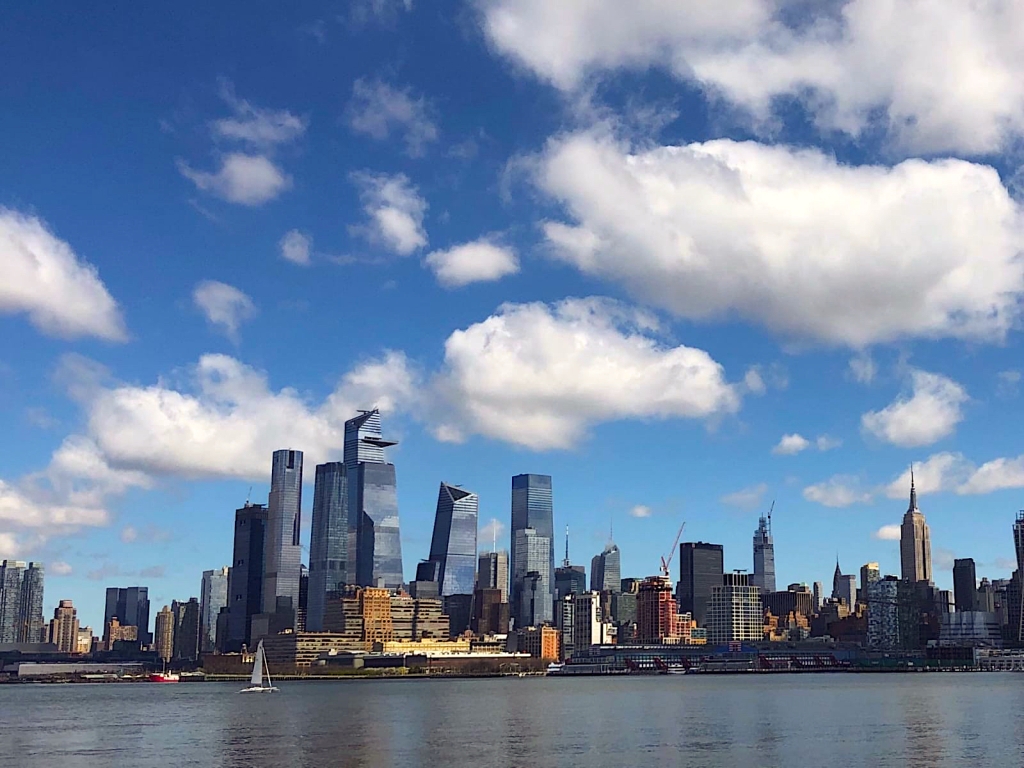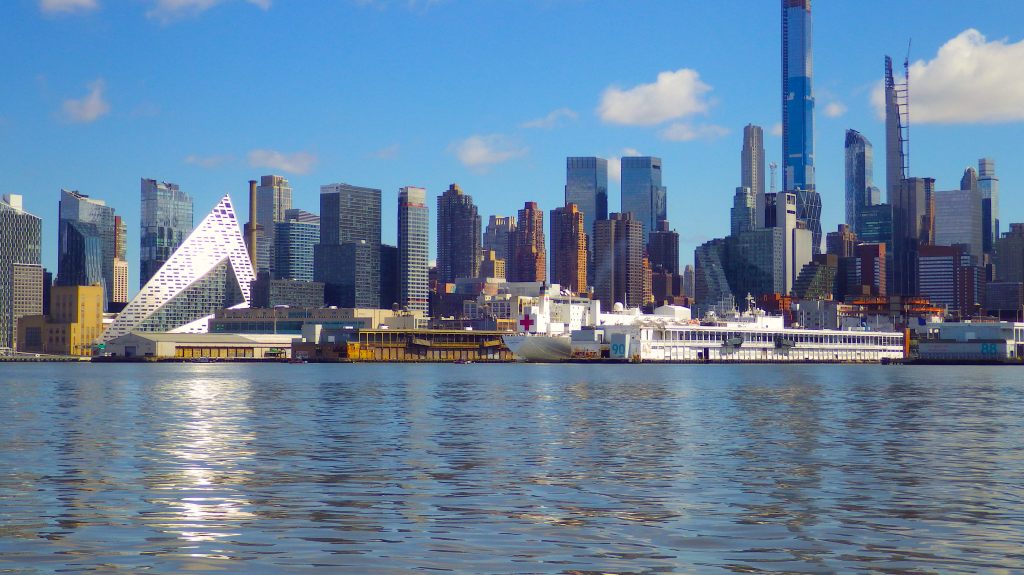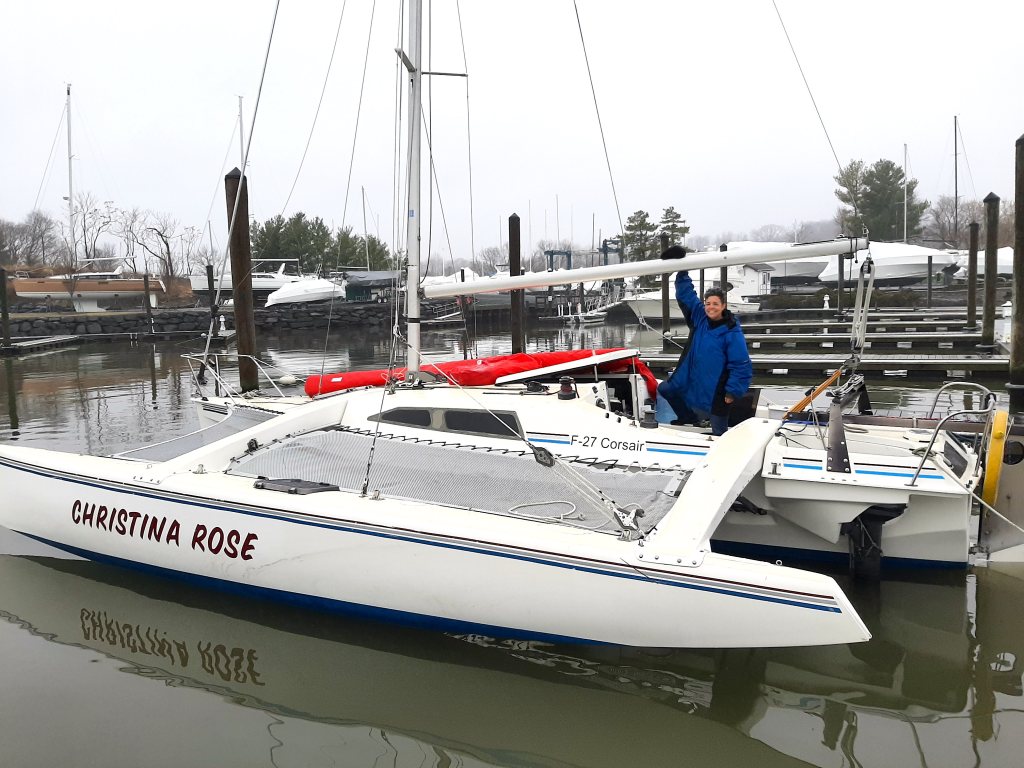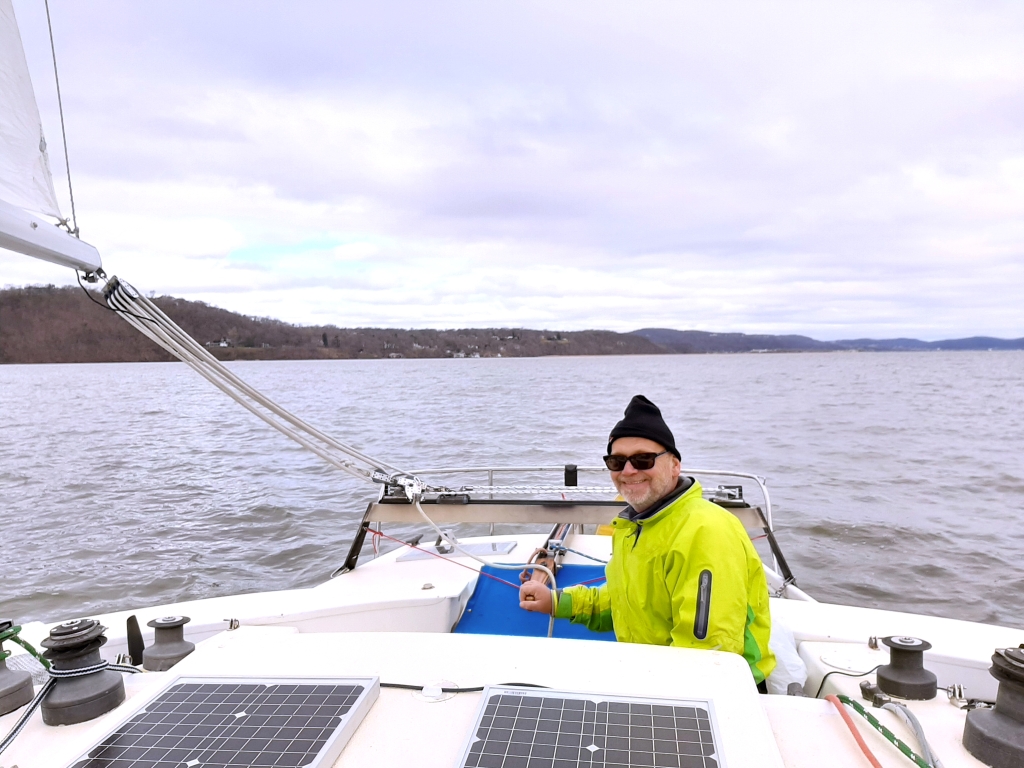
We wake early.
So far, so good. Christina Rose had handled fine during the 7-mile Hudson crossing to Croton Point. We’d travelled at a speed of 8-10 knots, with a gusty, 20-kt wind. It was bouncy, but manageable.
Mully hadn’t enjoyed the trip.
He spent the crossing in his hull tunnel, a tunnel that ran about 10 feet from the stern cabin under one of the shelves in the main cabin. We couldn’t reach him there, but we could hear him (he would occasionally emit a quiet “miaow” in response to our frantic calling). He must have been cold and terrified, but after we anchored he crawled out and snuggled in the sleeping bag with me.
Now he’s sound asleep, and complains a little in his sleep when I try to pet him. The boat is creaking, with water sloshing around me. And the wind is alternately howling and huffing. The sky is gray and lowering, the water has ominous gray and white ripples.
But the barometer on my watch says the weather will soon improve…
Vov is doing something in the main cabin, I can hear him.
Moving carefully so as not to disturb Mully, I open one of the door panels and peer out.
Ah.
Vov’s dicing onions at the tiny sink. Breakfast will be potatoes with onions, bacon, and eggs.
The plan for today is to sail down the Hudson to Staten Island. Vov had an anchorage there, in Great Kills Harbor. It was where he’d kept his sailboat, Nemo, for many years. It was about 50 miles, a straight shot down the Hudson and New York Harbor.

Then again, there was no guarantee we’d make it that far.
Was Christina Rose even seaworthy? She’d survived several nights in the water and the 7-mile crossing, but this would be her first real test.
And was it even legal to sail in New York, given the shutdown? Would we get stopped by the police? A few days before, the Coast Guard had issued a notification saying, effectively, that it would not be imposing any controls on boating traffic due to the pandemic. But New York City was, as promised, shutting down everything–including marinas, and so far as we knew, waterways.
If we made it… then what? We hadn’t really decided. The plan was to get out of the Northeast, but we hadn’t had much time to put more thought into it. We had friends in Maryland, Virginia, and North Carolina. And there was always Florida.
But for now, the goal was to get past New York.
After breakfast, around 7:30, we set off. It was gray, raw, and overcast. We huddled in the cockpit, sipping the coffee V had made.

It was strange sailing down the route I’d paddled so often. Under the Tappan Zee, the George Washington in the distance. Even for a spring morning, the traffic was unnervingly absent. The radio was silent, only the occasional crackle of life.
When would I paddle this route again?
As we approached the George Washington bridge, a thought occurred to me. My friend A.A. lived in Hoboken, a few blocks from the river. On impulse, I called her.
She was repairing her air conditioner, but dropped everything when she heard we were headed downriver. We wouldn’t be able to stop and visit, but at least she would see us as we passed Manhattan.
And, as it so happened, document the event (see top photo). We were almost too far apart to recognize each other, but we waved frantically and shouted.
The goodbyes, we later agreed, felt strange and solemn and scary.
We’d sailed from Croton Point to the George Washington bridge, but after the bridge we put on the motor. The goal was to get out of New York waterways as quickly as possible, before the police stopped us.
Fortunately, that didn’t happen, although it was impossible to miss us. We were the only boat on the water, which was uncharacteristically calm, with a glassy ripple. I’d never seen the river so empty, even in the dead of winter.
The familiar landmarks slipped by. Then an unfamiliar white box shape caught my eye. It was the hospital ship, the USNS “Comfort”, docked at Pier 90, just a few blocks from one of my paddling “home ports”.

It was an eerie, science-fictional feeling to glide past a military hospital ship docked in Manhattan. We had no idea how bad the pandemic would turn out to be, but if the authorities believed we needed a hospital ship… that wasn’t good.
We continued down the Hudson, past the Battery, past Governor’s Island. True to my watch’s barometric predictions, the weather had cleared and it was a warm, slightly gusty spring day. Once we were fully in New York Harbor we cut the motor and returned to sailing. Although we hadn’t arrived in Staten Island yet, we were past the most sensitive area. If the police were going to stop us anywhere, it would have been in the Hudson near Manhattan. That they didn’t was a good omen.
One that we hoped would last for the rest of the trip!






